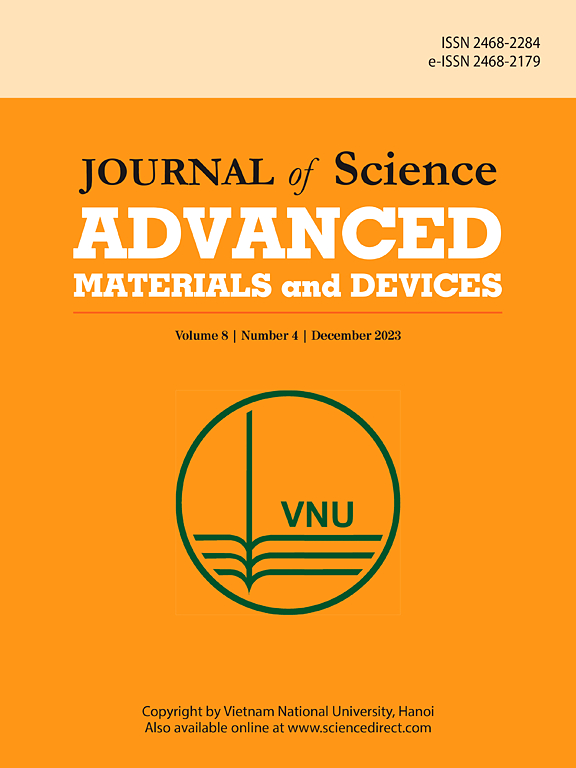可穿戴设备中的混合传感器集成,用于改善心血管健康监测
IF 6.8
3区 材料科学
Q1 MATERIALS SCIENCE, MULTIDISCIPLINARY
Journal of Science: Advanced Materials and Devices
Pub Date : 2025-04-11
DOI:10.1016/j.jsamd.2025.100889
引用次数: 0
摘要
心血管疾病(CVDs)仍然是全球发病率和死亡率的主要原因,因此迫切需要先进的无创监测技术。本综述探讨了混合磁传感器和光学传感器在可穿戴设备中的集成,旨在改变心血管健康监测。磁传感器以信号捕捉能力强、抗环境光干扰能力强而著称,与光电式血压计(PPG)等光学传感器相辅相成,后者可提供重要的血液动力学数据,包括血容量变化和脉搏率。这些技术的结合提高了监测系统的整体信号完整性、准确性和可靠性。我们对当前的集成策略进行了严格评估,重点介绍了先进的多传感器数据融合技术,这些技术可提高时间分辨率并丰富生理数据解读。此外,本综述还探讨了开发混合传感器系统所面临的挑战,如校准精度、实时数据分析、功率优化和用户友好型设计。展望未来,我们提出了研究方向,重点是完善传感器集成框架,以实现心血管疾病的早期检测和个性化管理。磁性和光学传感器之间的协同作用大大推动了下一代可穿戴诊断技术的发展,极大地改善了患者护理和健康状况。本综述全面概述了混合传感器技术在心血管监测领域的变革潜力。本文章由计算机程序翻译,如有差异,请以英文原文为准。

Hybrid sensor integration in wearable devices for improved cardiovascular health monitoring
Cardiovascular diseases (CVDs) remain the leading causes of global morbidity and mortality, underscoring the urgent need for advanced, non-invasive monitoring technologies. This review explores the integration of hybrid magnetic and optical sensors in wearable devices aimed at transforming cardiovascular health monitoring. Magnetic sensors, known for their strong signal capture and resistance to ambient light interference, complement optical sensors like photoplethysmography (PPG), which provide vital hemodynamic data, including blood volume changes and pulse rates. Combining these technologies improves monitoring systems' overall signal integrity, accuracy, and reliability. We critically evaluate current integration strategies, highlighting advanced multi-sensor data fusion techniques that enhance temporal resolution and enrich physiological data interpretation. Additionally, this review addresses the challenges in developing hybrid sensor systems, such as calibration accuracy, real-time data analytics, power optimization, and user-friendly design. Looking forward, we propose research directions focused on refining sensor integration frameworks to enable early detection and personalized management of CVDs. The synergy between magnetic and optical sensors significantly advances next-generation wearable diagnostics, greatly improving patient care and health outcomes. This review provides a comprehensive overview of the transformative potential of hybrid sensor technology in cardiovascular monitoring.
求助全文
通过发布文献求助,成功后即可免费获取论文全文。
去求助
来源期刊

Journal of Science: Advanced Materials and Devices
Materials Science-Electronic, Optical and Magnetic Materials
CiteScore
11.90
自引率
2.50%
发文量
88
审稿时长
47 days
期刊介绍:
In 1985, the Journal of Science was founded as a platform for publishing national and international research papers across various disciplines, including natural sciences, technology, social sciences, and humanities. Over the years, the journal has experienced remarkable growth in terms of quality, size, and scope. Today, it encompasses a diverse range of publications dedicated to academic research.
Considering the rapid expansion of materials science, we are pleased to introduce the Journal of Science: Advanced Materials and Devices. This new addition to our journal series offers researchers an exciting opportunity to publish their work on all aspects of materials science and technology within the esteemed Journal of Science.
With this development, we aim to revolutionize the way research in materials science is expressed and organized, further strengthening our commitment to promoting outstanding research across various scientific and technological fields.
 求助内容:
求助内容: 应助结果提醒方式:
应助结果提醒方式:


